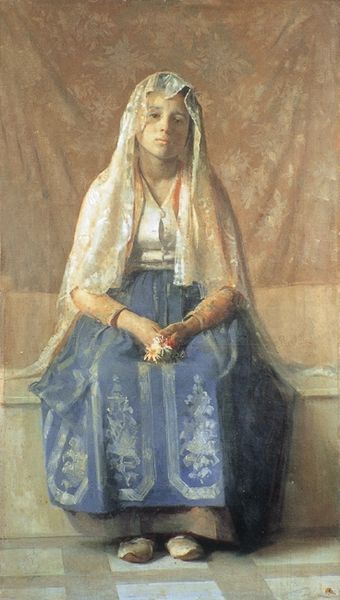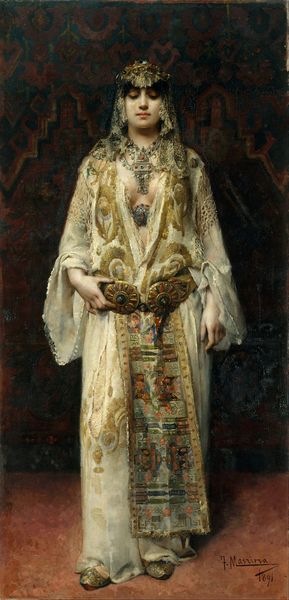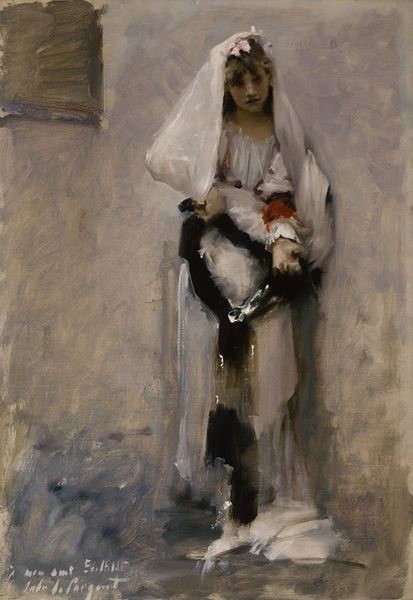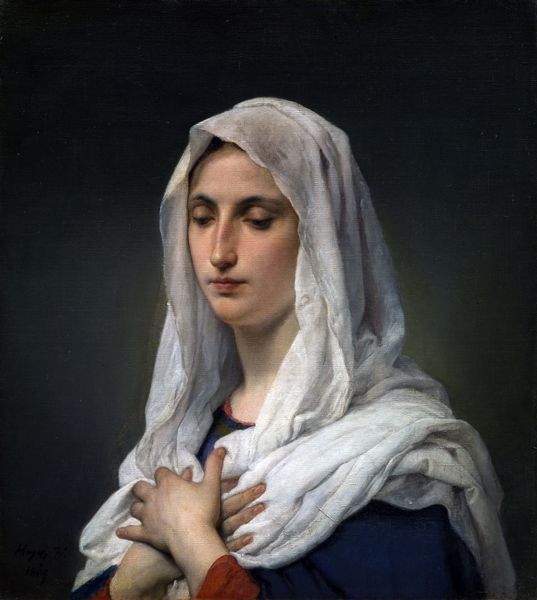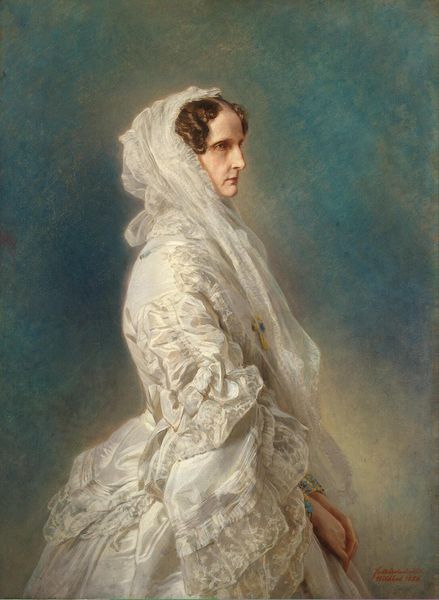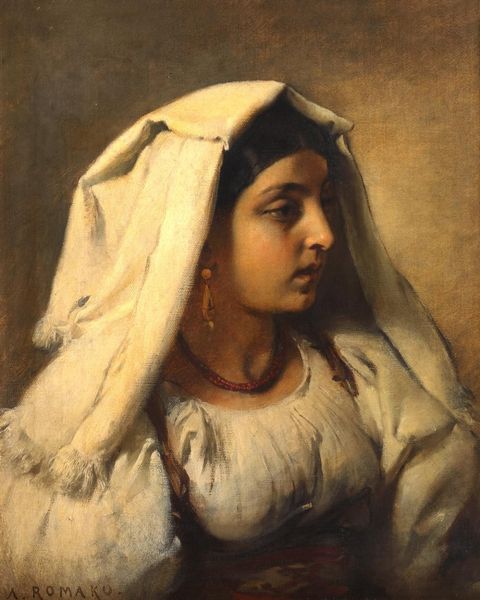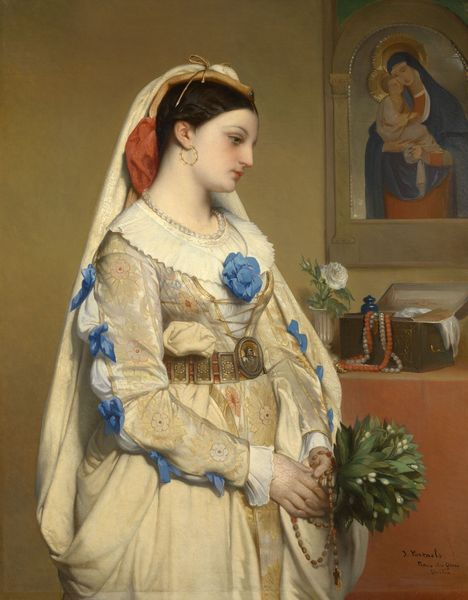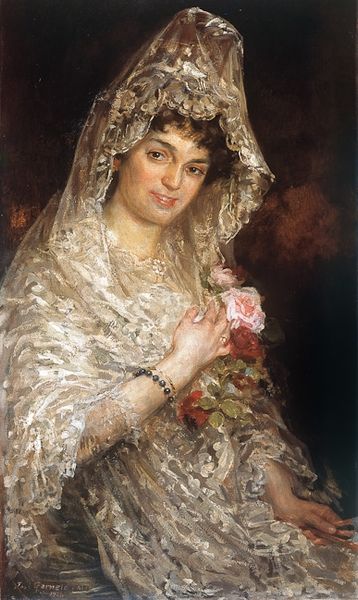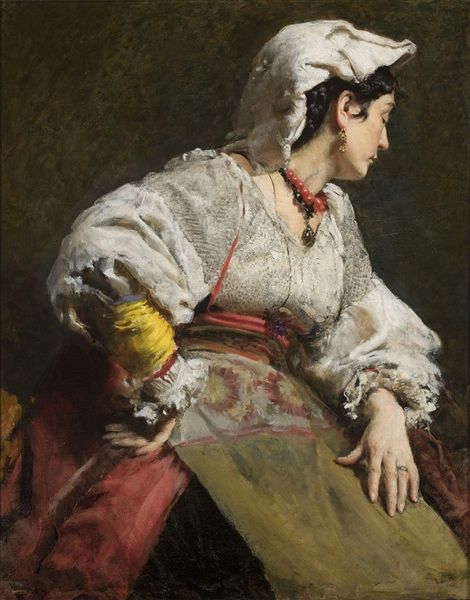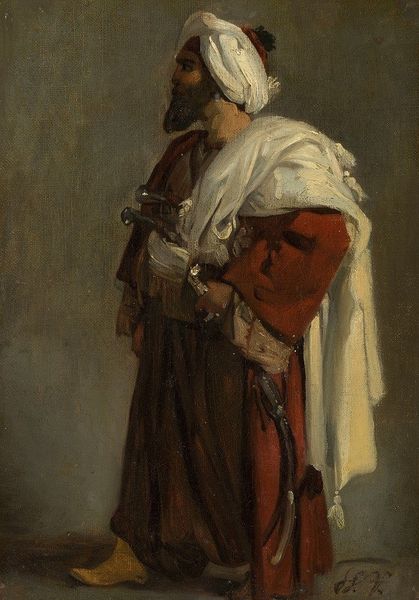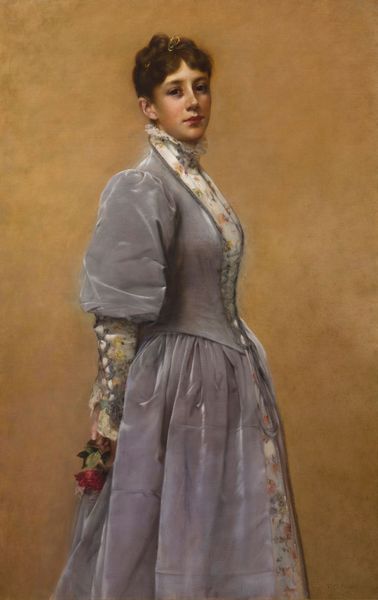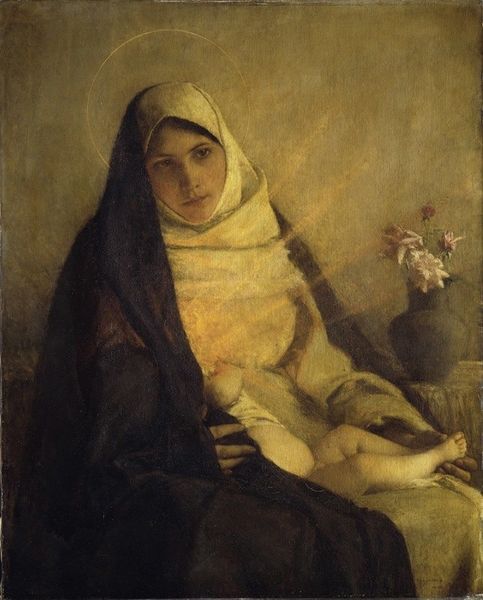
painting, oil-paint
#
portrait
#
painting
#
oil-paint
#
academic-art
#
portrait art
#
realism
Copyright: Public domain
Editor: So, this is Raimundo de Madrazo’s "Portrait Of Maria Guerrero as Doña Inés," painted in 1891 with oil paints. The way she’s looking down, combined with the subdued colors, creates this really serene mood. What's your take on this work? Curator: The most striking aspect to me is how Madrazo employs familiar religious symbols to explore identity. Notice the Cross of Saint James emblazoned on her chest – a symbol of Spanish nobility and Christian fervor. But is she embodying religious piety, or performing a role? The beads also resemble a rosary, but their placement almost feels decorative, theatrical. It prompts a question: How does costume inform our understanding of character, both on stage and in life? Editor: That's a great point. The "costume" definitely complicates a straightforward reading. Is there significance to the specific theatrical role of Doña Inés? Curator: Absolutely. Doña Inés is, of course, the female lead from "Don Juan Tenorio," a play steeped in themes of love, redemption, and societal expectations. Madrazo is cleverly layering Guerrero's identity as an actress, Doña Inés's persona, and potentially even Maria Guerrero's personal values. What emotions do these layered images evoke? Editor: It feels like Madrazo is using this portrait to explore the space between reality and performance, which is fascinating! Curator: Precisely. By looking at it through the lens of iconography, we can better understand the narrative complexities embedded within what might initially seem like a conventional portrait. Editor: This makes me look at portraits from a completely different perspective! Thanks!
Comments
No comments
Be the first to comment and join the conversation on the ultimate creative platform.
